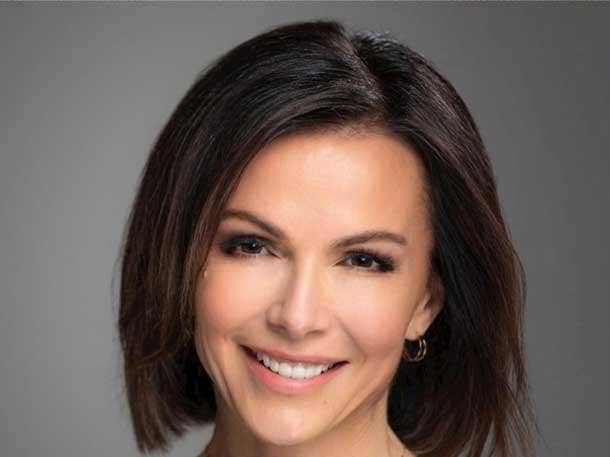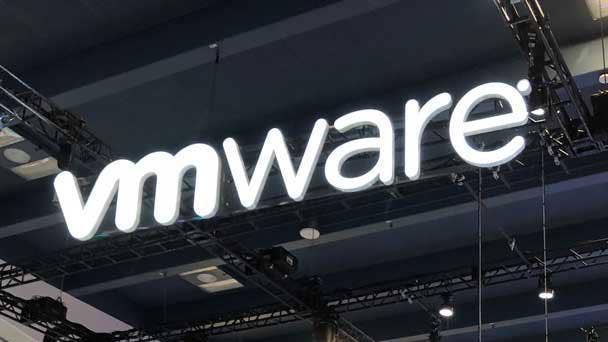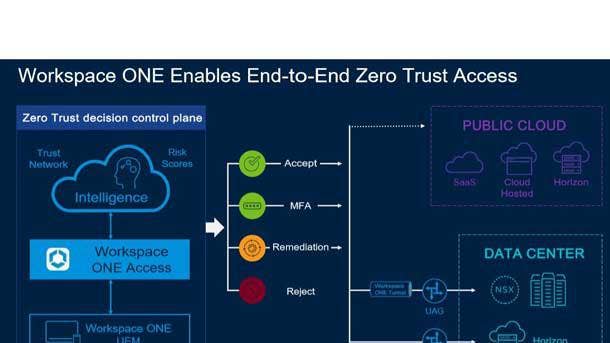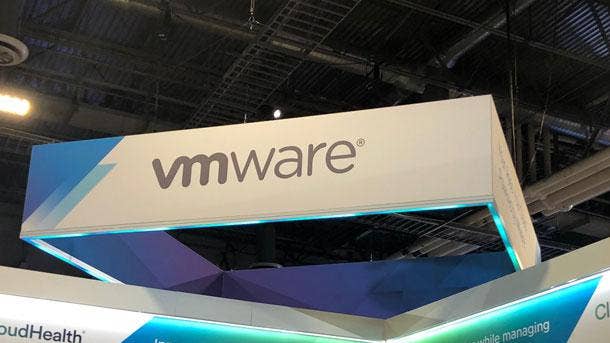VMware Channel Chief On Fixing VMC On AWS Channel Conflict
VMware’s new global channel leader Sandy Hogan talks to CRN about solving channel conflicts between AWS direct and partners around VMware Cloud on AWS deals as well as creating a “partner-first culture” within VMware.

Sandy Hogan Creating A ‘Partner-First Culture’
VMware’s new global channel chief, Sandy Hogan, said VMware is taking steps to solve any channel conflicts that arise between channel partners and AWS when selling its popular VMware Cloud on AWS offering.
Several VMware partners told CRN recently that massive multimillion-dollar VMware Cloud on AWS deals are being swooped up at the last minute by AWS’ direct sales teams, resulting in the loss of millions of dollars in enterprise cloud migration deals for the channel. VMware has acknowledged these partner challenges around large VMware Cloud on AWS deals, known as VMC.
Hogan, who joined VMware in May as senior vice president of worldwide commercial and partner sales, has already taken measures to combat the channel issues head on.
“It’s about creating better alignment in these teaming agreements that are established between VMware, AWS and the partner,” said Hogan in an interview with CRN. “That sets up the co-selling up-front and the rules of engagement and the outcomes out of that. So that also creates a form of protection for the partners in how they’re actually going to jointly sell [VMware Cloud on AWS] and the rules and responsibilities going into that teaming agreement.”
Hogan is an IT and channel veteran with nearly three decades worth of experience including most recently at Rackspace as well as a 15-year stint at Cisco with roles such as global vice president of Cisco’s Digital Transformation Group. In an interview with CRN, Hogan talks about the VMware Cloud on AWS strategy ahead, crafting new channel-focused organizations and creating a “partner-first culture.”
“We’re building everything from a global partner advisory council to executive sponsor programs. I want partners to be part of the build with us versus just the recipients of new programs, launches, etc. -- that’s super important,” Hogan said.

What are you doing to stop channel conflict between your partners and AWS direct when selling large VMC deals?
There’s a few things we’re doing on that. And there’s a few important notes as well. The first piece is, VMware and AWS are both two large organizations and we have different programs. Yet, at the same time, where are incredibly committed to the partner community -- that’s unequivocal. There’s no debate on that. We continue to learn and evolve as the program continues to mature.
One thing we’re doing is we have established the importance of the duel registration that is fundamentally protecting the partners from both organizations as they engage. And it also, candidly, leverages both programs because now when they are duel registering, it gives them visibility to actually have more flexibility in making decisions based on the customer’s landscape, the contractual landscape and they can best determine the best path for the customer. That duel registration is fairly new. That came out a few months ago when I was early on my tenure here when we were driving the formality of that. I’m personally invested in this with Chris Sullivan [AWS’ global director of worldwide strategic alliances] on the AWS side. We’re doing joint meetings with our top partners to align in getting direct feedback: what’s working, what’s not working – but also areas where we could innovate together to drive the joint selling opportunities. That’s a personal investment that we’re making.

What’s another change you’re making to help prevent channel conflict on VCF deals?
The last change we’re making is driving field alignment and co-selling early on in the process. So there has been a lot of work done over the last couple of months where there’s a lot of effort in joint AWS-VMware and our partners doing a lot of the tri-teaming agreements, basically co-teaming agreements. A lot of that is really now gaining momentum and I think more disciplined in the engagement model than what really existed a few months ago. And we’re continuing to improve.

Can you explain this new AWS-VMware-channel partner co-selling motion?
When there is field alignment early at the field level when it comes to some of these customer engagements, it’s about creating better alignment in these teaming agreements that are established between VMware, AWS and the partner. That sets up the co-selling up-front and the rules of engagement and the outcomes out of that. So that also creates a form of protection for the partners in how they’re actually going to jointly sell [VMware Cloud on AWS] and the rules and responsibilities going into that teaming agreement.

Do you think VMware’s strong partner strategy and channel expertise will rub off on AWS at all?
I don’t know if I would answer it relative to ‘rubbing off on AWS’ – that’s for them to really address. What I can say in my time here so far is that it’s been very clear that AWS has committed to the joint partnership in ensuring that we make partners successful. The level of access, the dialogue, the partnership, my time with Chris Sullivan and Doug Yeum [head of worldwide channels and alliances at AWS] – there’s no debate on that. Whether that’s us rubbing off, I think it’s just fundamentally, they recognize the importance of the partners and ecosystem. We’re doing that jointly.
When [VMware CEO] Pat [Gelsinger] talks about the investment, just as our core focus and sellers focusing on the customers, it’s not a direct model. When we have AWS that’s investing in VMware Cloud on AWS sellers, that is not intended to be direct. It’s intended to be with a partner ecosystem. Frankly, the fact that they’re making that investment I think it should highlight even more how much it will accelerate the partner momentum, and that’s our objective.

With VMware doubling down on public cloud providers like AWS and Azure, many of whom have large direct sales organizations, should partners view this as a threat?
The fundamental premise behind it is, it provides massive opportunity to our partners to be a trusted advisor to the customers. When VMware is in a position where our goal is to support any cloud that supports any app on any device -- obviously our relationship with AWS is the most longstanding -- but what you saw at VMWorld is we support all of the major public clouds. So that gives the freedom of choice that enables our partners to work with the customers to help them migrate and support whatever direction the customer wants to take. So that allows partners the flexibility to really move and support this multi-cloud environment that is critical in this new world.
I believe Gartner said by 2022, over 67 percent of the businesses are going to be implementing some type of multi-cloud or hybrid cloud strategy. When you think of that, it’s a huge opportunity for our partners.

What are you doing to improve the overall partner experience at VMware?
We made some design and strategic improvements over the last 30 days. One of our core strategic initiatives is around enabling the value continuum. We’re very centered on this customer for life aspect and we have now built a team centered on partner lifecycle services. Richard [Steeves (pictured), senior director of worldwide partner programs at VMware] is leading that. That’s particularly important on the application side because for customer consulting, this is where our partners can get the real access to the line of business decision makers and be part of the decisions early and the dialogue early with customers on what types of business decisions and outcomes are they looking for. That’s what we want to enable partners to do at a much more rapid pace.
Forrester said 65 percent of all cloud decisions are being made outside of IT. I worked on that years ago when we were trying to connect business and IT, but when you think about that magnitude, enabling partners to have access to those decision makers – it’s huge, [because it’s] not the infrastructure that’s going to get the attention of the line of business decision makers.

Can you provide more details on these new channel-focused organizations inside VMware?
We identified four main imperatives that drove some of the changes that we made in the organization and where we’ve made investments. VMware is incredibly partner focused and partner friendly. One area that we are incredibly doubling down on is creating a partner-first culture -- all the way from involvement in product development, because now we’re looking at cross-architecture, cross-platform solutions and driving and embedding that simplicity. We’re building everything from a global partner advisory council to executive sponsor programs. I want partners to be part of the build with us versus just the recipients of new programs, launches, etc. -- that’s super important.
As a result of that, we’ve had different teams focusing on different aspects of programs, initiatives, incentives – and we’ve put that all under one leader to focus on partner experience and programs. That’s Tracy-Ann Palmer [Vice President of partner programs and experience at VMware]. Following the theme of simplicity, we now have that all under one thread to really drive and mandate that culture and the programmatic aspects of that simplicity.

What is another key channel imperative for you?
It’s aligning to the value continuum. Our whole mission that we’ve created is around scaling customers for life value through a connected ecosystem. We put Richard [Steeves] to lead our partner services role and that’s everything around defining rules of engagement across the whole life cycle. The ecosystem right now is no longer linear. It’s no longer one partner for one transaction. So it’ about building out those life cycle capabilities, how we incentivize differently and how we create the opportunity for partners to play any role across that continuum. So we’re aligning investments around that. We didn’t have a team that was focused on that before. Now we have a full team that we reallocated and redesigned that is 100 percent dedicated to creating that capability.

How do you plan to better enable VMware channel partners?
Another main imperative is enabling a solution-focused ecosystem. This is everything around use case-based solutions, think in terms of the workspace solution that was just launched with Workspace ONE, Carbon Black and our SD-WAN solution. Getting much more into those business-oriented use cases and how deliver those to partners.
It’s about enabling a partner to our partner ecosystem as well. IDC references that more than 30 percent of projects require more than two partners. When you think of that acceleration, how we can orchestrate and bring those partners together becomes important. As well as, how do we make our technology so consumable that it enables partners to build their unique IP and their scalable IP on top of that. So we have also redesigned our organization where we have created a technology solutions team and that is net new for us. We’re just building that. They are 100 percent focused on building the right kind of use cases with our partners and enable them to be even more relevant and scale in the market place.

What’s your message to the VMware channel community?
The fundamental premise of my objective and my team’s objective is we want to unleash all aspects of our partners’ capabilities and looking at them as the delivery mechanism for true digital transformation for our customers. If you think of VMware as that digital foundation, I want to unleash every opportunity for partners to deliver that value to the customers. The second, is to go on this evolution to be the accelerators for our partners in driving this outcome-based delivery mechanism for our joint customers together and how they can bring new capabilities to their organizations and how they can partner across a broader ecosystem to deliver that value. That is the unlimited potential that exists. That’s been a personal mission of mine for a long time.